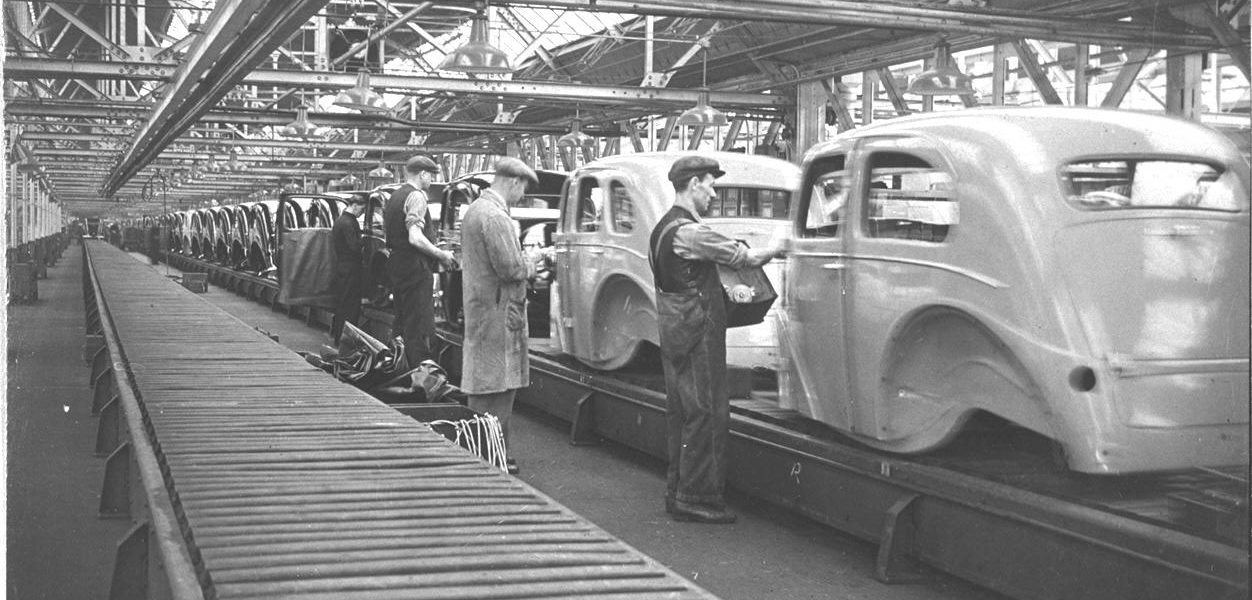Proudly on display in the Science Museum’s Making the Modern World gallery stands the car credited with changing the way we live, work and travel.
First released in 1908, the now iconic Model T was the brainchild of American industrialist Henry Ford. Determined to ‘put the world on wheels’, not only did Ford’s manufacturing methods make cars more affordable to the masses, but they radically changed factory work forever through mass production and moving assembly lines.
The Model T was the auto industry’s first ‘universal car’ sold across the world. This led to Ford building factories in several countries, including Britain where its Trafford and Dagenham sites became mass employers for local and migrant workers.

Inspired by the memories of Science Museum Gallery Officer, Steve Moore, this blog post explores the invaluable contribution of Black British Londoners working at Ford’s Dagenham factory, constructing cars, vans and engines which kept the country moving.
‘The ‘Ford Model T’ is a special object for me as the gallery it’s housed in Making the Modern World is the first one I worked in within the museum. I’ve always had a personal connection with Ford cars, the first car I ever bought was a Ford!
‘When my parents first moved to London from the West Indies the company everyone wanted to work for was Ford, so this object also reminds me of them and the start of their new lives in the UK.’ – Steve Moore.

With the Model T car Henry Ford established the manufacturing system that made his name a byword for mass production.
His vast Highland Park plant in Detroit, USA, was one of the industrial wonders of the 20th century and was visited by political leaders and industrialists from around the world. Ford declared, ‘the man who places a part does not fasten it…the man who puts on the nut does not tighten it’.
Through this ruthless subdivision of labour, and by applying mass production techniques on a vast scale, the Ford company created, with the Model T, a simple and affordable car. This brought motoring within the reach of a huge new market.
Every step was taken to simplify and speed up production, including the decision in 1914 to paint cars only in black. The design was first introduced in 1908 and by 1927, when the Model T was phased out, over 15 million had been produced. This was the largest production run of any car design in the first half of the 20th century.

Ford opened its factory in Dagenham in 1931, a site selected due to its proximity to waterways. This might be surprising for a vehicle manufacturer, but at the time Britain’s roads were undeveloped and it was more reliable to move goods and raw material by boat.
Inspired by Ford’s Rouge River plant, on the edge of Detroit, the Dagenham factory was designed to be self-reliant with its own steel foundry and power station. The factory made a wide range of products, including vans, tractors, cars and diesel engines.
During its heyday in the 1950s, there were over 40,000 workers employed on site and one in three cars on British roads were from Dagenham.
Ford’s manufacturing process revolutionised mass production, but the work itself was often boring and repetitive, with employees fixed on assembly lines or sweating in the hot foundry casting car parts and engines.
In a time before health and safety legislation kept staff safe, it was a dangerous place to work, and many were injured or lost their lives.

At a time when other workplaces were denying work to people from ethnic minorities, Ford’s factory provided jobs for Londoners from diverse backgrounds including Black British citizens who moved from the Caribbean in the 1950s and 1960s, sometimes referred to as the Windrush generation.
By the late 1970s, over a third of the staff at Ford were from ethnic minorities working in a wide range of roles to keep the factory moving.
Although many migrants found a new home in Barking and Dagenham and at Ford, the company was far from immune to racism in the workplace and unfair working conditions. Ford’s Dagenham factory became known for its wildcat strikes and principled workforce.
During the 1968 sewing machinist’s strike, 187 women walked out of the Dagenham plant refusing to work until they were granted recognition for the quality of their labour. While the women’s request was not met, the strike was fundamental to the passing of the Equal Pay Act two years later.
In the 1990s, a series of anti-racist walkouts were organised in response to Ford’s record of racial discrimination which included harassment and victimisation of employees from ethnic minorities and the erasure of Black workers in photographs in sales brochures.
High-profile industrial tribunal cases against Ford and staff action led to the company committing to new measures to address racism in the company.

Today vehicles are manufactured in all manner of settings, from independent bicycle companies to global conglomerates.
They rely on people and skills from around the globe to design, build and transport goods worldwide. These machines are made by people, define communities and shape our personal mobility.
